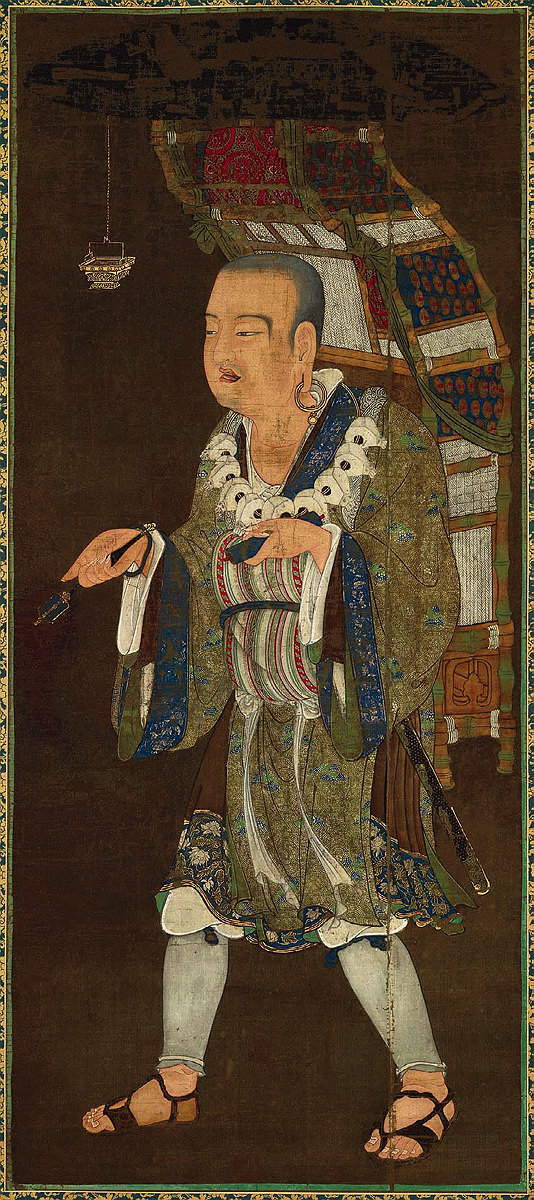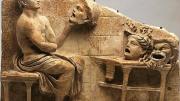Judging by its title, Martin Puchner’s new book might sound like an encyclopedia or a textbook—a massive tome that will cover the entire history of human culture. Puchner, Wien professor of drama and of English and comparative literature, is in fact the general editor of such a book, the Norton Anthology of World Literature (2018). But while Culture hopscotches between eras and continents with commanding ease, it doesn’t try to cover everything. Rather, it focuses on 15 historical episodes—some well-known, others fairly obscure—to illustrate a central thesis: the value and necessity of cultural appropriation.
In today’s cultural climate, this takes some courage. As Puchner writes in his preface, the idea that “culture belongs to the people who live it” unites people across the ideological spectrum—from “nativists invested in their national traditions” on the right to those, usually on the left, who hope “to stop cultural appropriation by declaring one group’s cultural property off-limits to outsiders.” Debates over the ownership of culture are sometimes ludicrous, as when students at Oberlin College made national news for complaining that their dining halls had committed cultural appropriation by serving inauthentic sushi. But the idea that culture “belongs to the people born into it, and...must be defended against outside interference” also appeals to authoritarian leaders from Eastern Europe to East Asia who rail against the imposition of alien, “Western” values such as LGBTQ rights.
The meeting of two cultures never turns one into a carbon copy of the other. Rather, it produces something unpredictably new.
Culture pays tribute to individuals throughout history who thought differently, believing culture “is made not only from the resources of one community but also from encounters with other cultures.” Each chapter describes such an encounter, allowing Puchner to avoid textbook-style generalization about societies and periods in favor of dramatic human stories.
Take, for instance, the seventh-century Chinese traveler Xuanzang, who spent 16 years—more than a quarter of his life—on an epic journey to India and back. At the time, it was illegal to leave China without the emperor’s permission, a way of enforcing political and cultural separation between the country and its neighbors. Xuanzang defied the law and left in secret, driven by religious passion. A convert to Buddhism, he was determined to visit the land where the Buddha had lived and bring back his authentic teaching.

Xuanzang, “a hero of cultural mobility,” left China for 16 years—to bring authentic Buddhist teaching back from India.
Photograph from the Tokyo National Museum/in the Public Domain
As Puchner explains, Buddhism was often regarded in China as a subversive doctrine, and Xuanzang’s journey demonstrates why. Confucian doctrine emphasized the stability and harmony of the state; candidates for the imperial civil service had to pass a national examination on ancient texts, inculcating what Puchner calls “worship of the past.” Buddhism, by contrast, was individualistic and preached renunciation. Like the Buddha himself, monks withdrew from family and social life in favor of poverty and contemplation. When Xuanzang finally made it back to the Chinese capital, laden with relics and documents from the homeland of Buddhism, he was offered a government post but refused, preferring to join a monastery.
Puchner honors Xuanzang as “a hero of cultural mobility.” What makes such figures dangerous, in the eyes of purists, is that the meeting of two cultures never turns one into a carbon copy of the other. Rather, it produces something unpredictably new, much as a child blends the characteristics of its parents to create a unique individual.
Western civilization is founded on two such acts of hybridization. The first was the wholesale adoption of Greek culture by the Roman Empire—a rare example, Puchner notes, of a victorious power modeling itself on a defeated one. After crushing the once-proud city-states of Greece in thesecond century B.C.E., the Roman elite adopted Greek as the language of high culture, hired Greek teachers for their sons, and worshiped Greek gods under Latin names, so that Zeus became Jupiter and Aphrodite became Venus.
Culture views this transformation through the lens of Pompeii, an Italian town that was buried in volcanic ash in 79 C.E., effectively freezing it in time. One of the artworks preserved at Pompeii is a portrait of the Greek playwright Menander, whose comedies were the model for popular Latin plays by Terence and Plautus. The Pompeii portrait shows that a Roman homeowner who lived some 400 years after Menander still considered it a sign of good taste to honor the Greek writer—the way an American today might display a poster of Shakespeare.
The other great act of translation at the heart of Western culture was the one that produced Christianity, by fusing the religious ideas of ancient Israel with Greek philosophy and Roman institutions. Puchner has surprisingly little to say about this process, preferring to view it from a distant and unusual vantage point: not Jerusalem or Rome but Ethiopia. According to the Kebra Nagast, a sacred text of Ethiopian Christianity, the biblical Ark of the Covenant was stolen from Jerusalem by the attendants of the Queen of Sheba during her visit to King Solomon, and brought back to the Ethiopian city of Aksum, where it remained for centuries.
This text was probably written in thefourteenth century, and Puchner interprets it as an attempt to bolster the pedigree of Ethiopian Christianity in the face of rival churches. “The authors of the Kebra Nagast were able to claim that their practice of Christianity, which was being dismissed as a strange sect, was actually a more ancient and authentic form of Christianity, making Ethiopia one of the earliest Christian nations,” he writes. Rather like Xuanzang’s pilgrimage to India, in other words, the Kebra Nagast was a return to ancient origins that ended up producing something unmistakably original.
Such examples make it easy to feel good about cultural appropriation. Inventing a story about Solomon and Sheba didn’t require burning down anyone else’s church, just as translating Buddhist scriptures didn’t require killing any Confucians. That’s one reason Puchner likes to write about small-scale and little-known examples of cultural contact, rather than world-historical transformations, which seldom go so smoothly.
For instance, in discussing the European discovery of the Americas, Puchner dwells on the German artist Albrecht Dürer, who in 1515 made an engraving of a rhinoceros, one of the exotic animals Europeans learned about during the age of discovery. In fact, the animal was so exotic that Dürer himself never saw one. His image was based on a verbal description by a merchant who saw a rhino in Lisbon, where it was brought from Asia by Portuguese traders.
Unsurprisingly, the engraving that resulted was not quite accurate—Dürer’s rhino doesn’t just have tough skin, it seems to be wearing plates of armor. But it was very popular. The story is a perfect example of Puchner’s thesis: When you bring cultures together, the result might be a misunderstanding, but at least it will be a fruitful and interesting one.
Of course, the age of discovery also had much less pleasant consequences. Culture describes the conquest of the Aztec capital of Tenochtitlan by the Spanish conquistador Hernán Cortés, which involved the destruction of architectural and literary treasures, as well as many deaths. The fact that Dürer was inspired by a cache of Aztec objects he saw in Brussels, where they had been sent by Cortés as tribute to Emperor Charles V, hardly makes up for what was lost.
Culture remains an optimistic book because it focuses on what might be called the curators of culture—the scribes, translators, travelers, and collectors who preserve the past from erosion and destruction. Today’s humanities professors play a similar cultural role: the Norton Anthology of World Literature can be seen as a portable version of the Storehouse of Wisdom, where Islamic and Greek texts were collected in ninth-century Baghdad.
But while culture would be worse off without curators, it is not the curators who create it. Art and religion may be, as Puchner writes, the way humans “make meaning” and “answer fundamental questions,” but they are generally created by artists and prophets who believe they know the true answers to those questions. Such world-historical figures tend to be uninterested in the answers given in other times and places, which they regard as errors and obstacles. The most important question raised by this fascinating book is whether an age that regards culture neutrally, as a resource to be preserved and administered, is capable of producing a genuinely new culture of its own.







